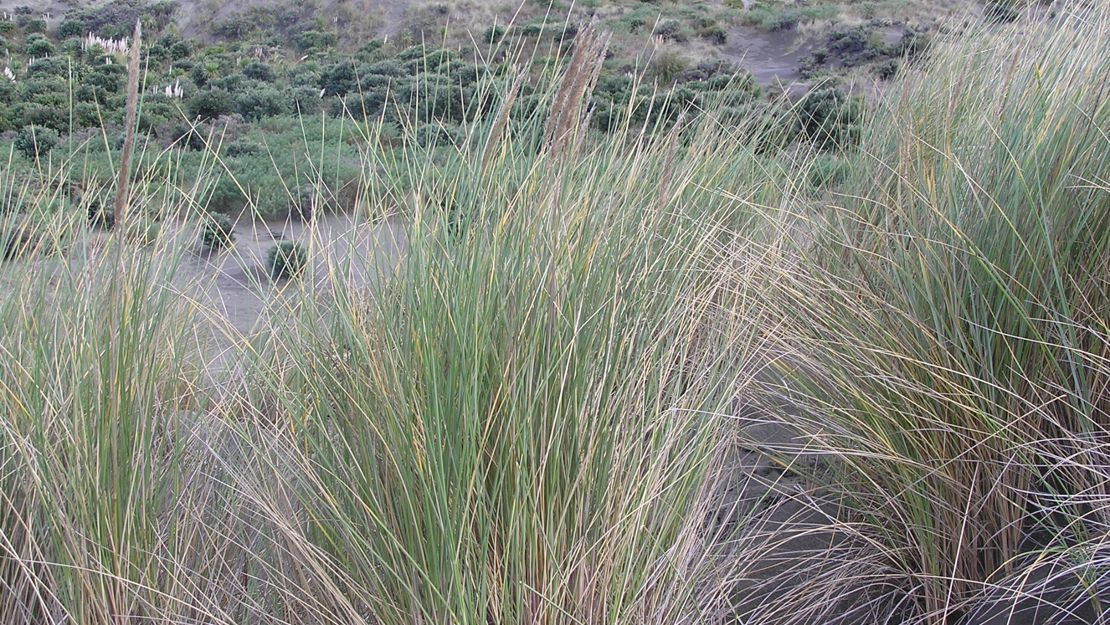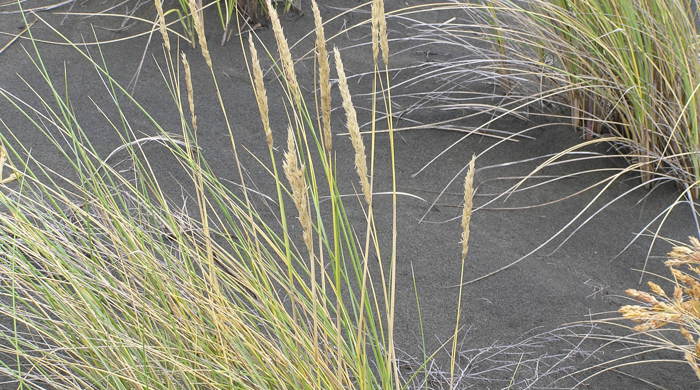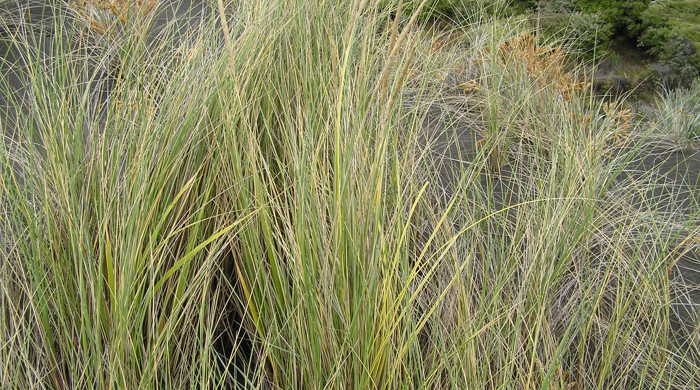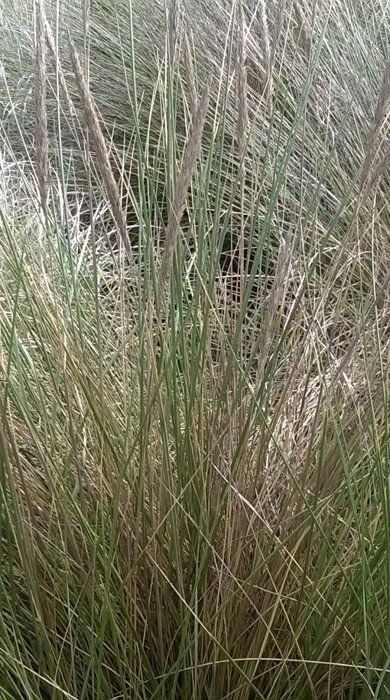Calamagrostis arenaria (previously Ammophila arenaria)
Marram grass
Family: Poaceae
Origin: Europe

Regional Pest Management Plan (RPMP) status
- Whole region — Sustained control
- Hauraki Gulf Controlled Area Notice pest
General description
Erect, perennial, densely tufted grass < 1 m tall. Rhizomes are creeping. Leaves are grey/green, tightly rolled and appear cylindrical. Flowerheads are borne in November – March.
What you need to know
To help protect our environment, from 1 September 2021, you:
- will not be allowed to breed, distribute, release or sell marram grass within the Auckland region.
- will not be allowed to plant marram grass within the Auckland region, unless you are transferring an existing plant on your land to another location within the boundaries of the same property.
- must destroy any marram grass on land that you occupy if it has been planted in breach of the above rules and you are directed to do so by an authorised person.
Habitats
Sand dunes.
Dispersal
Seeds dispersed by wind. Vegetative spread from rhizomes and rhizome fragments, dispersed by water. Human-mediated dispersal through deliberate plantings to stabilise dunes.
Impact on environment
Forms extensive cover in sand dune habitats, substantially changing dune morphology. Rapidly accumulates sand, burying and displacing native dune species. Reduces shore bird nesting habitat.
Control
Site Management
Use haloxyfop where pingao or sedges present (NB haloxyfop will kill spinifex, stunt pingao). Follow up required annually until eradicated. Begin control at windward end of infestation, or where native veg is best represented. To prevent rhizome movement, control at eroding sites & prevent physical damage of marram at other sites. Spray after rain if possible to minimise salt contamination of herbicide, esp when using glyphosate.
Recommended approaches
Physical control
Method: Dig out.
Plant parts requiring disposal: Seed and rhizomes.
Disposal options: Remove to greenwaste or landfill if practical.
Biocontrol
Biocontrol is currently not available for this species.
Community agrichemical control recommendations
Basic Growsafe certified: Foliar spray with 125ml glyphosate green per 10L of water.
Certified Handler/Experienced agrichemical user: Foliar spray with 125ml glyphosate green per 10L of water and 20ml penetrant or foliar spray with 150ml haloxyfop-P-methyl per 10L of water.
Caution: When using any herbicide or pesticide please read the label thoroughly to ensure that all instructions and safety requirements are followed.






